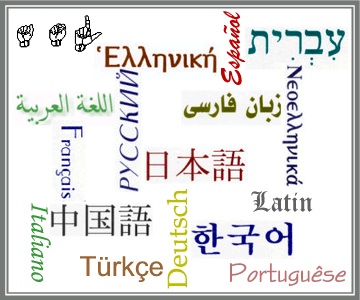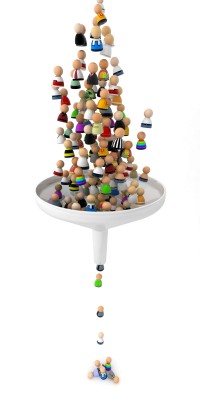Publications
Eleonore Breukel is the author of over 100 articles for various business magazines, newspapers and the virtual media.She co-authored a book on how to do business in 19 countries across the world.
Return to overview.
Cultural Diversity success of Amsterdam Toastmasters Club
Insights in how cultural differences positively impact the success of a club.
Have you ever attended a meeting with people from 35 different cultural backgrounds? If so, you probably experienced chaos, misunderstanding and limited results. Or, if the meeting was well-structured and everyone followed strict instructions you might have found yourself in a colorful jigsaw puzzle where everything fit together easily. This is what happens on Friday nights at the Amsterdam Toastmasters Club. How and why do cultural differences impact the club
The culture of leadership
As in all organizations, good leadership is key in Toastmasters clubs. The effect of the leadership style of a president cannot be underestimated.

The Dutch and Anglo-Saxon leadership styles are strongly characterized by an open, task-oriented, team approach at the board level. Board members went about their tasks very efficiently, supporting their president behind the scenes while the president took a more visible role. Individual members were responsible for improving their speeches and participating in club competitions.
Last year an Indian was elected president. In his holistic, inclusive leadership style he strongly promoted a sense of responsibility among each member to actively contribute to the progress of the club through individual advancement, club competition and taking roles in newly created small committees thus including every one. Due to his focus on ‘learning’, extra meetings were held in order for all members to practice their speaking skills. The personal attention of the Vice President of Education made sure that no one lagged behind. Each board member was given the opportunity to show good leadership in the spotlight whereas the president himself remained in the background.
This holistic approach also included expanding his global Toastmasters network in order to safeguard and secure his efforts at a local level, to ensure that the club was on the right track and to promote the club at the international level.
Eighty-five percent of all people in this world use an abundance of words to say little. Most people first describe, at length, a situation or the context before getting to the point. They are circular communicators. Giving a speech within five minutes is a real challenge and beginner speakers often struggle getting to the point within their allotted time.
The Dutch, Scandinavians, and Israelis are known to be direct and linear communicators concentrating on the subject without providing detailed information. The British, Germans, Americans, Australians and New Zealanders are also linear communicators however not as direct and use more words to express themselves. Russians can also be very direct when exited but are mostly indirect just as most Eastern Europeans.
Learning how to deliver your message in a well-structured way, in under seven minutes is a great asset at international business meetings, virtual conferences or the negotiation table.
Story telling
Asian, African and Latin American members in Amsterdam are champions in storytelling. In their regions, education is often wrapped up in entertaining stories with metaphors from which each listener can pick out his or her own learning points. Story telling comes naturally to them. Speakers from the more northwestern regions mostly demonstrate their point in a story by backing the story up with facts and figures.
We versus me
Each new member starts his Toastmasters journey by telling something about him or herself in a seven-minute introductory speech. This is not an easy task for a beginner. Most Asians and Africans tell stories about their family in which they themselves play a ‘role’. People from northwestern cultures usually talk about themselves and their personal experiences.
Here we see clearly how people from different cultures understand their role in a bigger world – either as individuals and or as part of a group.
When it comes to humor in speeches, the British and the Irish members are champions. The humor is dry and witty and often based on self-criticism or word play. The English language may lend itself to humor, but culture plays a large influence. Other native English speakers are not always as humorous.
In Europe, Italians come second after the British for their use of humor. Le battute or “wittiness” is almost indispensable in Italian business and private life. The Italian members of Toastmasters do their utmost to come up with great translations for their jokes. However humor gets often lost in translation.
The language
English is the common language of the club but the 52 members speak 35 different languages combined. Some individual members speak seven or eight languages alone. Multilingualism is becoming a social phenomenon due to the needs of globalization however English is still the dominant language in business culture. It is a joy though to listen to the accents of the non-native English speakers as well as the different uses by native speakers from North America, England, Scotland, Ireland, the West Indies, South Africa, Australia and New Zealand.
The native English speakers are always five steps ahead of the non-native English speakers. The latter have to put much more effort into preparing speeches compared to the native English speakers. They have to switch their thinking from one language to another, often struggling with untranslatable words or concepts. However this is not a handicap but a blessing in disguise. It gives the mind a workout that strengthens its cognitive muscles.
From script and grammar to sound and rhythm
 Many members were raised with different scripts such as Characters, Cyrillic, Arabic, Devanagari and others which influences their way of thinking and speaking. Their rhythms of speech, the way their lips form around a word and their natural intonations are music to the ears. Yet this colorful pallet of tones is forced into the English language with its limited vocabulary and simple grammar structures compared to many other languages.
Many members were raised with different scripts such as Characters, Cyrillic, Arabic, Devanagari and others which influences their way of thinking and speaking. Their rhythms of speech, the way their lips form around a word and their natural intonations are music to the ears. Yet this colorful pallet of tones is forced into the English language with its limited vocabulary and simple grammar structures compared to many other languages.
English proficiency
All members have a high command of English. Non-native English speakers who are foreigners in the Netherlands usually speak English at work and at home. Their English proficiency is usually better than that of the Dutch club members who speak Dutch at work and at home.
Members greatly enjoy the experience of all these differences in communication. It helps them understand and communicate effectively at work.
Group dynamics 
A variety of group dynamics are mostly visible before and after the meetings. The very strict meeting structure leaves little room for cultural differences to come out in group dynamics. Upon arrival the members greet each other as old friends, which immediately sets a positive atmosphere for the upcoming meeting.
Once the meeting starts, the group seems to pass through a funnel. They enter as themselves, then they are all voluntarily pressed through a mono-cultural tight funnel during the meeting. After the meeting, they slide back into their own selves as they come out of the funnel at the other end. It only takes a few short steps to the bar before the culturally-diverse group dynamics become visible again.
With this more inclusive leadership style the number of members quickly increased and extra meetings provided more speakers slots. With this change, the number of nationalities and the variety of mother tongues increased as well. In the past, the native English speakers formed a clear dominant group in the bar which has now transformed into an inclusive and all-encompassing gathering of members for after meeting drinks. In this case diversity lead to unity.
Global mindset
The Amsterdam Toastmasters Club with its 35 nationalities is a perfect place to develop a global mindset. It is not a secret that some Toastmasters join to improve their speaking and leadership skills while others come because of the great international network for international business people and intellectuals, and to learn from people with a different cultural background. People from varied walks of life, different disciplines and industries, talk at their own pace and with their own communication styles.
Cultural diversity is definitely the success story of the Amsterdam Toastmasters Club.
---------------------------
References:
GLOBE: (2008)Culture and Leadership across the world. Research and in-depth studies of 25 societies with the participation of 17.300 middle managers of 950 organizations in 65 countries and 170 co-investigators.
Nisbett R.A. (2003) The Geography of thought: How easterners and westerners think differently.
Bennett M.J. ed.(1998) Selected Readings on Basic Concepts of Intercultural Communication.
Observations of the author of the cultural dynamics of Amsterdam Toastmasters as of 2006.
The Author
Eleonore Breukel is the director of Intercultural Communication bv, an intercultural consultancy and training company located in Amsterdam, the Netherlands. She studied in Paris and Portland and lived and worked in Rome, Athens, London, New York and the Dutch Caribbean. She delivered training in over 60 countries for the corporate world, NGO’s and higher education. She authored a book on Doing Business in 19 Countries and published over a 100 cultural related articles. www.intercultural.nl - ebreukel@intercultural.nl
She became a Toastmaster in 2006 and since then observed the intercultural dynamics of the Amsterdam Toastmasters Club.
Back
